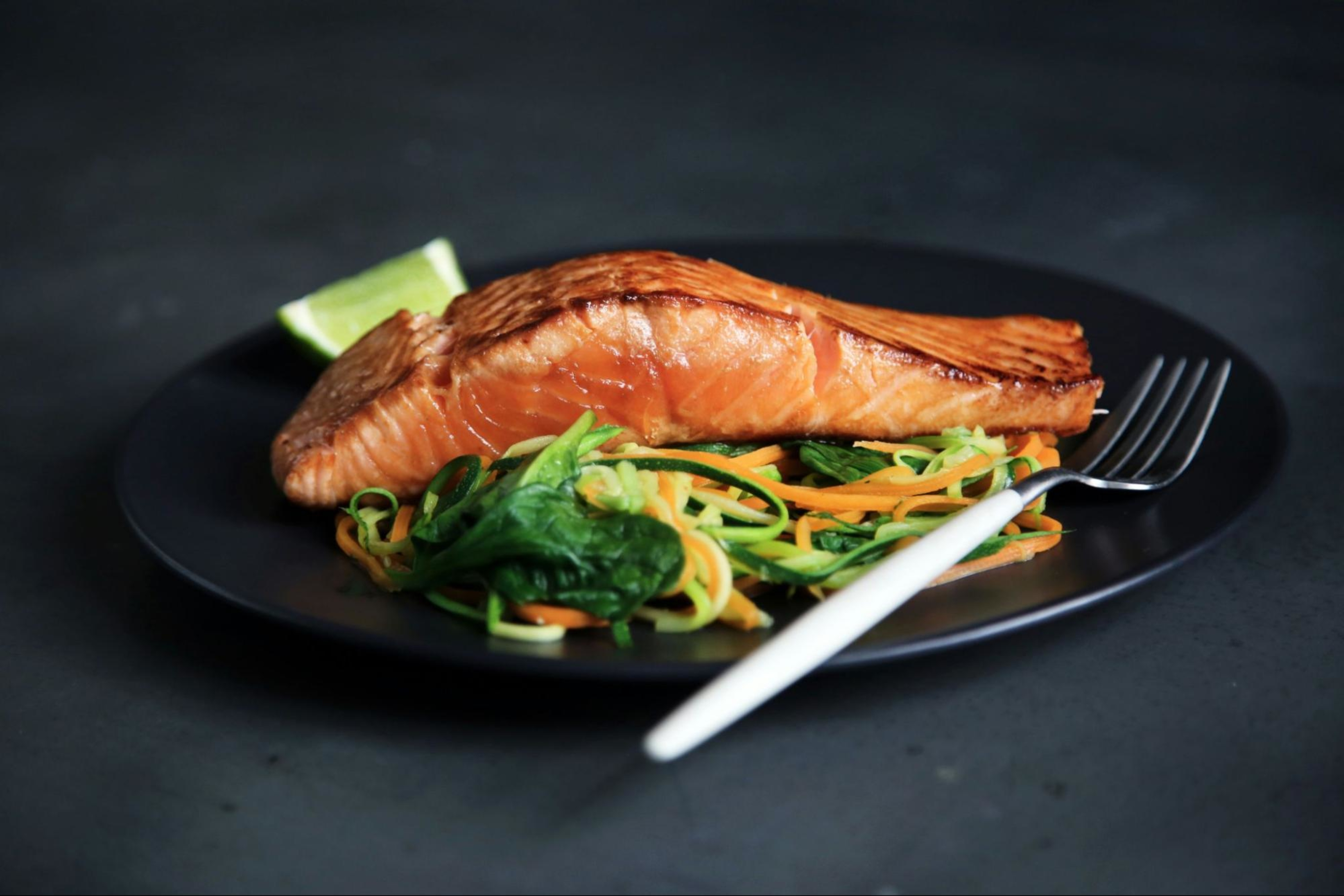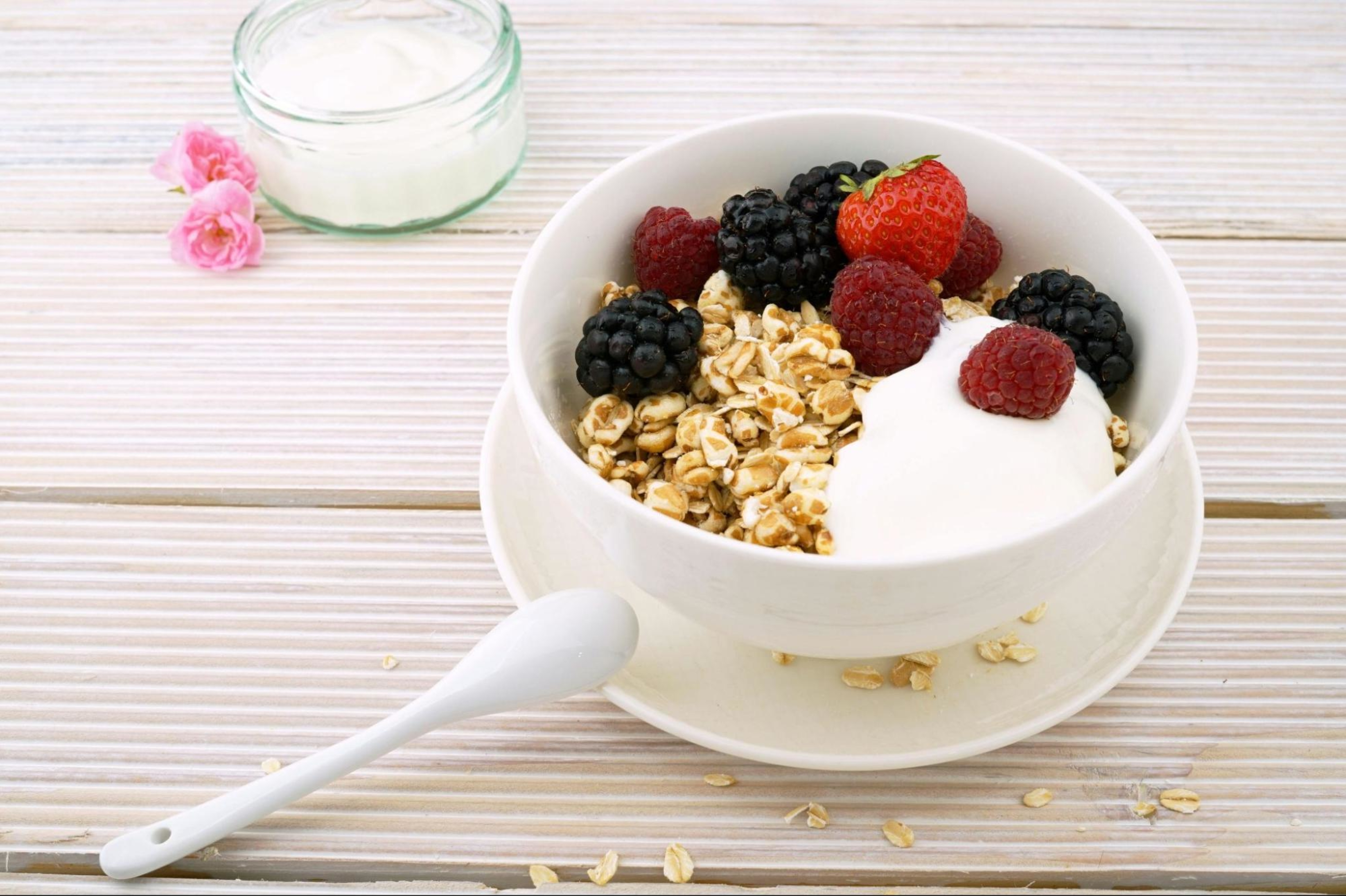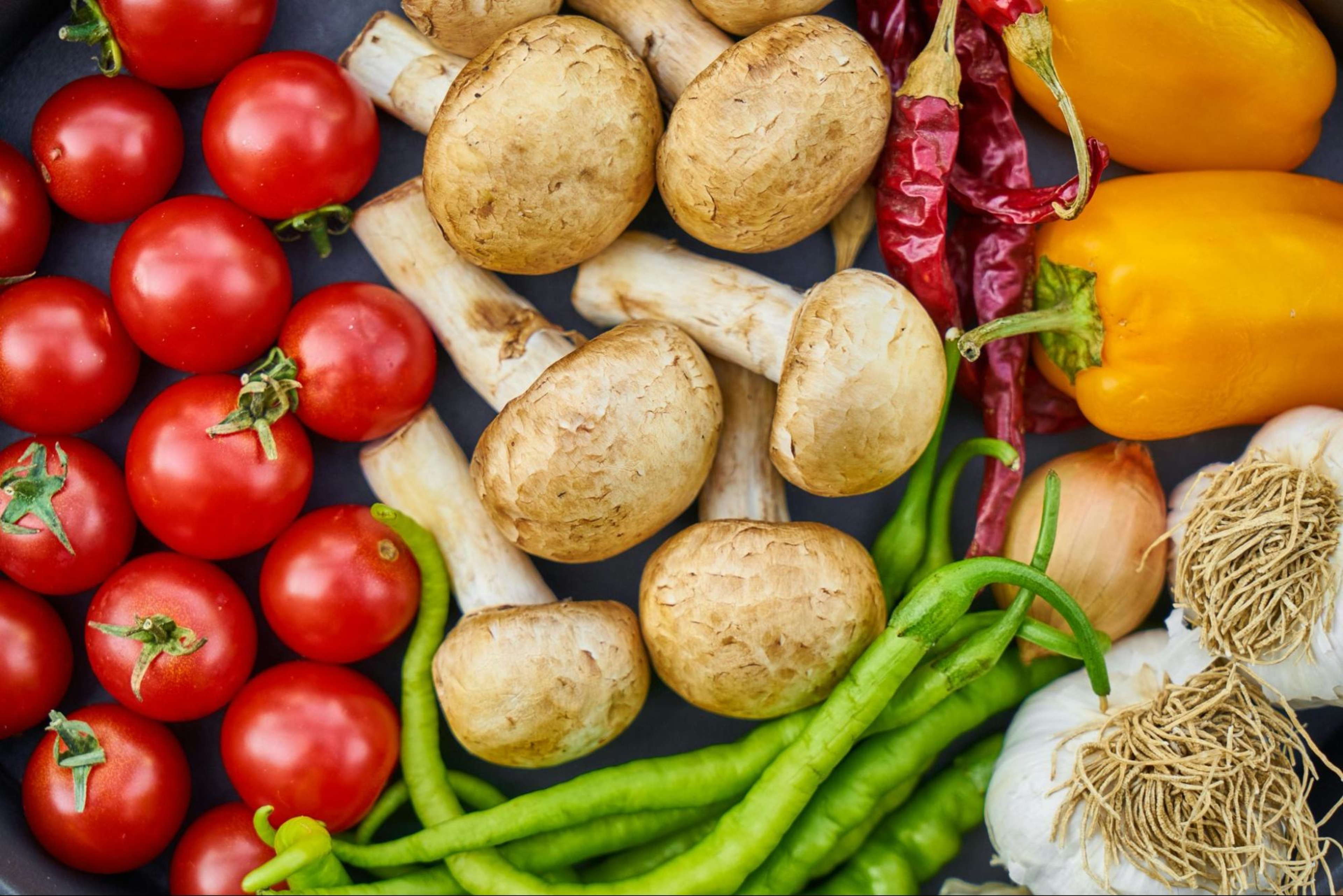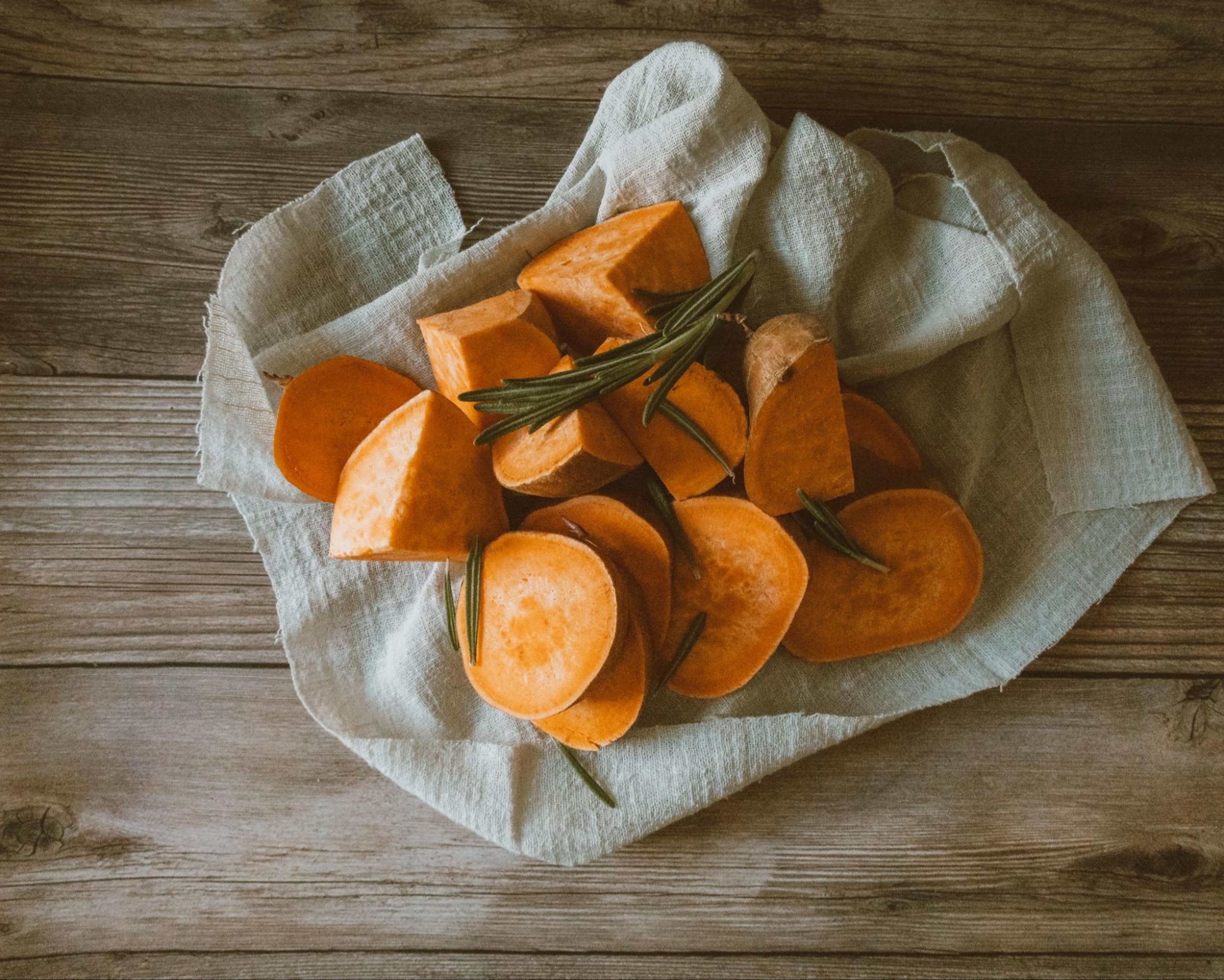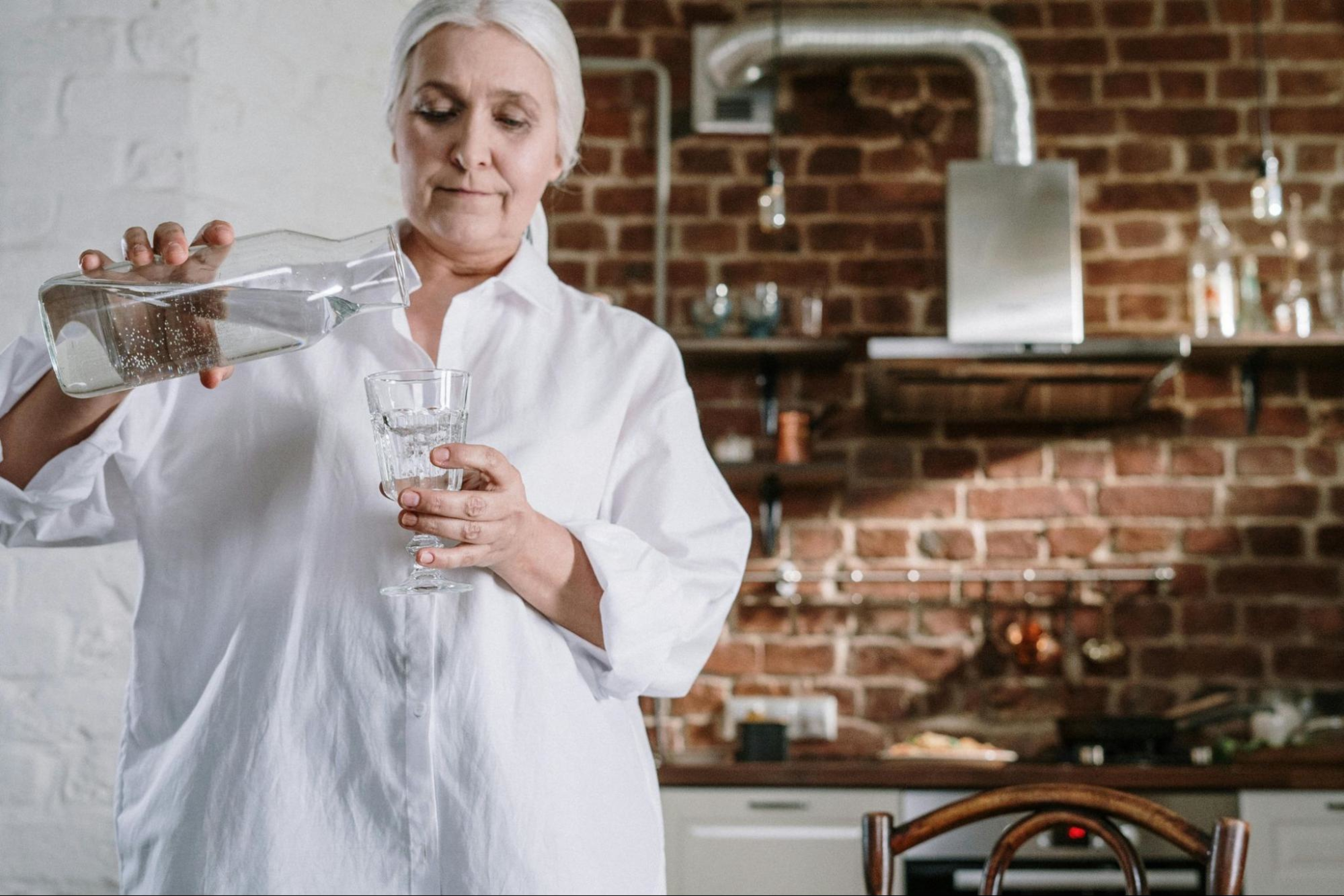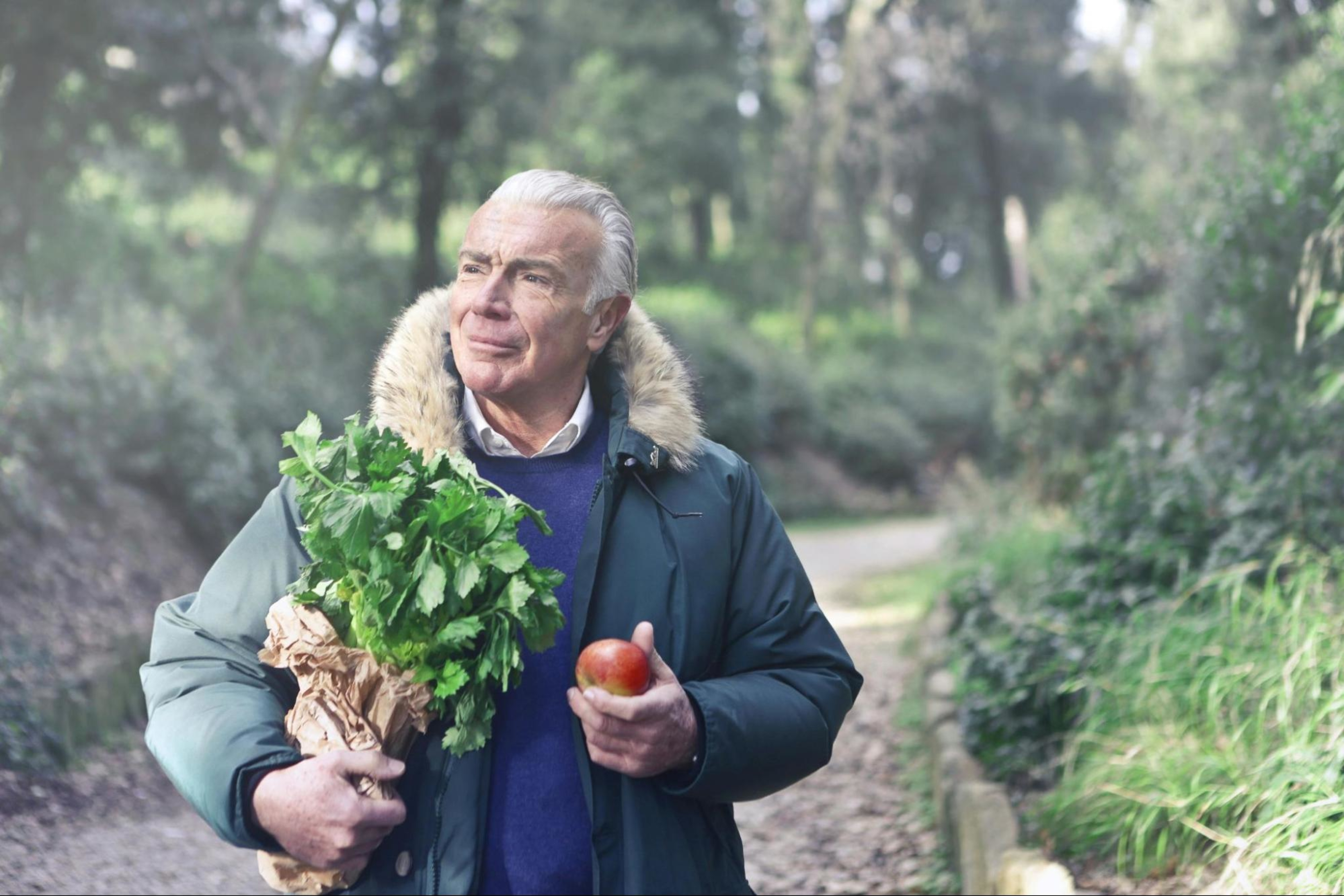Nutrition for Healthy Aging: 5 Strategies to Stay Strong, Energetic, and Resilient

Aging is inevitable—but how we age is largely shaped by the choices we make every day. Nutrition is one of the most powerful tools we have to support healthy aging.
The foods we eat don’t just provide energy; they directly influence muscle growth, bone health, inflammation, gut function, and even our cognitive health as we get older. The right nutrition habits can have a huge impact on how well we move, recover, and feel, even amid the realities of aging.
In this blog, I’ll share five practical, evidence-based nutritional strategies anyone can use to age with more energy, resilience, and function, including:
1. Prioritize protein for muscle preservation
Any discussion about nutrition for healthy aging must start with protein. Eating enough protein is critical to combat sarcopenia, the loss of muscle and strength that occurs as we age. This process, which begins in our 40s and ramps up after age 60, can lead to frailty, decreased mobility, and greater fall risk. Sarcopenia can lead to a precipitous loss of functional independence by affecting the type of muscular strength needed to climb stairs, to carry groceries, or to safely get up from the floor.
Compounding this issue is the onset of anabolic resistance, whereby the body becomes less sensitive to protein. When we eat a sufficient amount of protein, it triggers the body to build muscle in a process called muscle protein synthesis. Older adults require more protein at one sitting in order to spur this process when compared to their younger selves.
For those who want to remain physically active as they age, protein is a non-negotiable. Remember that exercise is a stress on the body, and activities like resistance training actually break down muscle fibers. In order to benefit from exercise, we have to recover sufficiently. Protein provides amino acids, the building blocks of new muscle, and sends a signal to the body that it’s time to build back stronger.
Try to center each meal and snack around healthy, whole-food sources of protein such as fish, poultry, beans and dairy. Whole-food sources are generally better than supplements because they contain additional vitamins and minerals that support overall health. In a pinch, supplemental sources of protein are a great way to hit your targets.
Takeaway: By aiming for at least 25–30 grams of protein at each meal, older adults can continue to ensure their physical activity results in strength gains instead of muscle loss.

Efficiency for the win.
Work 86% of your muscles in just 20 minutes of rowing with Hydrow.
2. Support bone health with calcium and vitamin D
Another key area where nutrition can support healthy aging is related to bone health. After about age 30, bone density begins to decline, and even accelerates after menopause due to hormonal changes. This can lead to osteoporosis and an increased risk of fractures in older adults. Fortunately, there are some specific nutrients we can get through the diet to support healthier bones.
First is calcium, which makes up most of the mineral content of our skeletons. Calcium also exists in the bloodstream, where its levels are tightly regulated. If we don’t eat enough calcium, and blood levels start to fall, the body will leech calcium from our bones. This, unsurprisingly, isn’t a good thing for bone density. We can prevent this process by focusing on calcium-rich foods like dairy, fortified dairy alternatives, and leafy greens to hit a minimum daily intake of 1000 mg/day for men and 1200 mg/day for women.
That’s not all there is to the calcium story, however. Our ability to absorb calcium through the gut depends upon our levels of Vitamin D. Research has shown that calcium and Vitamin D together are more effective than either on its own for supporting bone health. Depending on where we live, we can get Vitamin D more or less reliably through sun exposure, but skin synthesis does decrease as we age. Dietary sources of Vitamin D include fatty fish and fortified products, but in some cases supplementation may be appropriate to hit a daily intake of 600-800 IU.
While calcium and Vitamin D get top billing, there are a handful of other nutrients that also support bone health:
Magnesium, found in leafy greens and nuts, helps to activate Vitamin D.
Vitamin K (especially K2, which is found in cheeses and fermented foods like natto) is needed to produce osteocalcin, which binds calcium into the bone matrix.
Zinc, found in seafood and meat, has been positively linked to bone growth and repair.
Takeaway: Eating enough calcium and watching your levels of Vitamin D, within the context of a varied diet of nutrient rich foods, ensures that you have all the building blocks for strong bones as you age.
3. Eat an anti-inflammatory diet
Let’s talk inflammation, the root cause of many age-related illnesses. Inflammation is the body’s immune system responding to some perceived stress or illness. While this can be a good thing in the short term, problems arise when this inflammatory response persists.
Chronic inflammation is associated with a variety of age-related illnesses such as heart disease, type 2 diabetes, and neurodegenerative disorders. Fortunately, the way in which we eat has a huge role in reducing inflammation, decelerating the aging process, and reducing our disease risk.
An anti-inflammatory diet is one that emphasizes whole foods like fruits, vegetables, and lean proteins. Specific nutrients like omega 3 fatty acids, found in fatty fish, are especially effective at reducing levels of cytokines and C-reactive Protein, markers of inflammation in the body.
Colorful fruits such as berries contain flavonoids, which are powerful antioxidants that reduce inflammation in the brain and cardiovascular system. Fibrous vegetables and legumes can improve the overall balance of the gut microbiome, which is beneficial for reducing overall inflammation.
On the flip side, it’s useful to try and limit foods that drive inflammation. In general, an abundance of processed foods and refined sugar in the diet sets the stage for inflammation. Processed foods like chips, candy, and most everything in the snack aisles are delicious, but they can cause a spike in blood sugar and insulin levels that may lead to insulin resistance over time (a precursor to metabolic conditions such as type 2 diabetes).
They are also highly palatable and energy-dense—in other words, they’re full of calories and easy to overeat. Excess body fat is itself inflammatory, so processed foods are particularly useful to limit if you are struggling to manage your weight.
I’d like to highlight three major offenders in the diet when it comes to inflammation. Reducing your intake of these three foods will pay major dividends in your quest to age more gracefully:
1. Soda
A can of regular soda contains about 40 grams of sugar, roughly 10 teaspoons, all of which would be considered “added sugar” (as opposed to the natural sugar found in a piece of fruit). The American Heart Association recommends limiting added sugar to 25 grams (6 tsp) a day for women, and 36 g (9 tsp) for men. So, one can of soda is already pushing it or blowing past these upper limits for healthy intake.
Liquid calories like soda also digest quickly, spiking blood sugar and insulin levels. They also don’t provide much feeling of fullness, so they’re easy to overconsume. Given that there is no nutritional benefit to soda, it really should be limited to an occasional treat.
2. Alcohol
Excess alcohol consumption can cause a whole host of problems, including oxidative stress to the liver and damage to the gut lining. A compromised liver is less able to process toxins and play its vital role in the body’s repair process. A damaged gut is more permeable, meaning it tends to let in more foreign and damaging entities like lipopolysaccharides, bacterial endotoxins that trigger an inflammatory immune response.
Alcohol also has calories in liquid form and can contribute to excess caloric intake just like soda. Plus, alcohol can have a cascading effect on our food choices, energy levels, and decision-making that leads to unhealthier choices overall. Ultimately, alcohol is an area where you just have to be honest with yourself about what it’s giving you versus taking away.
3. Trans fats
Trans fats are the ultimate “franken-food” that humans created in response to the ill-fated fat-phobic hysteria of the ‘70s and ‘80s. Through a process called hydrogenation, food scientists were able to transform liquid vegetable oils into semi-solid fats and market plant-based butter substitutes like margarine. These foods were rich in trans fats, which shortly came to be associated with a number of poor health outcomes.
Research has shown that trans fats, with their chemically altered cellular structure, do not play nice with the human body. They damage the lining of our arteries, raise bad cholesterol while lowering good cholesterol, and increase systemic inflammation.
Trans fats are so harmful to human health that they have been heavily regulated out of the U.S. food system. However, they can still be found in fried foods at restaurants that reuse frying oil, imported foods, and some processed baked goods. Research indicates that there is actually no safe level of trans fat intake, and thus it should be avoided at all cost.
Takeaway: Prioritize anti-inflammatory foods in the diet like fatty fish, fruits and vegetables to decelerate aging and reduce disease risk. Avoid excess intake of refined sugars and processed food. Consider moderating your alcohol intake, and avoid trans fats.
4. Support your gut health and microbiome
Good gut health is about more than just digestion. The digestive tract is inhabited by trillions of bacteria and microorganisms, known as our microbiome, that play a critical role in supporting our immune system, metabolism, and cognitive health.
A more diverse microbiome has been associated with better health outcomes, and unfortunately, this diversity tends to decrease with age. The way in which we eat can have a direct and positive impact on the microbiome, which has a cascading effect on overall health.
Let’s discuss three ways to support your gut health through nutrition:
1. Eat foods that are high in fiber
Fiber has a number of health benefits that go beyond gut health—dietary fiber can help regulate blood sugar levels, improve cholesterol levels, and curb excess appetite to support weight loss—but for the purposes of this article, let’s focus on what it does for the microbiome.
Gut microbes convert fiber into short-chain fatty acids that reduce inflammation and strengthen the intestinal barrier. Famously, fiber keeps things moving through the GI tract, supporting healthy bowel movements and preventing constipation. Fiber-rich foods tend to offer a variety of other nutrients as well, so a focus on fiber is just a sound strategy on all levels.
2. Eat fermented foods (probiotics)
Humans across time and cultures have valued all types of fermented foods for their health benefits. The pantheon of fermented foods includes Japanese soybean-based foods like natto and miso, fermented cabbage like kimchi from Korea or sauerkraut from Eastern Europe, and fermented dairy like yogurt that has achieved global appeal.
Fermentation produces beneficial bacteria, which can be eaten and introduced directly into the gut microbiome. Foods like these are considered probiotics and are a great way to promote the right sort of bacteria into the gut.
3. Eat prebiotic foods
Less heralded than probiotics, prebiotics are specific types of fibrous foods that selectively support healthy strains of bacteria. Whereas probiotics offer a direct infusion of new, beneficial bacteria, prebiotics provide the ideal food source for the good bacteria already in your gut to thrive.
Some examples include artichokes, garlic, onions, and oats. Your best bet is to include a variety of fiber-rich foods, but favoring these prebiotic foods in particular can give your gut health an extra boost.
Takeaway: A diverse microbiome supports healthy aging by improving immunity, metabolism, cognition, and digestion. Eating a diet rich in fiber, probiotics, and prebiotic foods can improve gut health and has a cascading effect on overall health.
5. Build better hydration habits
A focus on nutrition isn’t just about what you eat, but also what you drink. Hydration is certainly a concern for older adults because even mild dehydration can impact cognitive status. Dehydration can also increase the risk of urinary tract infections, kidney stones, and constipation, among other health issues. Making matters worse, we lose the ability to sense thirst as we age, meaning it’s harder to tell when we might need to drink something.
Hydration is not just about fluids, but also electrolytes like sodium, potassium and magnesium as well. Maintaining electrolyte balance helps to prevent swings in blood pressure, as well as symptoms of dizziness and weakness. The kidneys, which are responsible for regulating fluid balance through water retention and filtering, become less efficient over time. So there are multiple factors that make hydration status important as we get older.
Let’s talk about a few strategies for staying hydrated:
1. Eat foods that have water in them
Fruits like oranges, grapefruit, and watermelon are a great way to sneak in hydration as you eat. Same goes for vegetables like cucumber and lettuce; a heaping salad of fresh vegetables can contain a surprising amount of water. Dishes such as soups, stews, and even something like breakfast cereal with milk are also an easy way to support hydration.
2. Build in consistent hydration habits
As mentioned above, our sense of thirst tends to weaken with age, so you can’t always rely on feeling thirsty to remember to drink water. Instead, try to incorporate fluids into regular mealtimes or at scheduled intervals throughout the day.
A glass of water with a slice of lemon and a pinch of sea salt first thing in the morning is a nice hydration win to start the day. Carrying a refillable water bottle with you is a no-brainer as well. There are also a handful of apps and other tools that help gamify hydration. Find out what system works for you to build those consistent habits, and put hydration on auto-pilot.
Takeaway: Good hydration is important as we age because it supports brain function, mobility, and independence. To combat the age-related decline in thirst, try to build hydration habits into your day and favor foods that have water in them.
Putting it all together: Your blueprint for healthy aging
Healthy aging is possible, and it comes from building steady, sustainable habits that support your body where it needs it most: strong muscles, resilient bones, reduced inflammation, a healthy gut, and proper hydration. By employing these strategies and leveraging nutrition, you create the foundation for long-term vitality.
Remember that these are guidelines, not strict rules. An important part of healthy nutrition is eating foods that you enjoy in a way that feels realistic and brings you joy. Nutrition is certainly a powerful tool, but it’s one of many in the lifelong pursuit of better health. My hope is that you can use nutrition to fuel a long life full of movement, connection, and meaning.

Explore Hydrow’s library of 5,000+ rowing, circuit training, yoga, Pilates, and mobility workouts.

